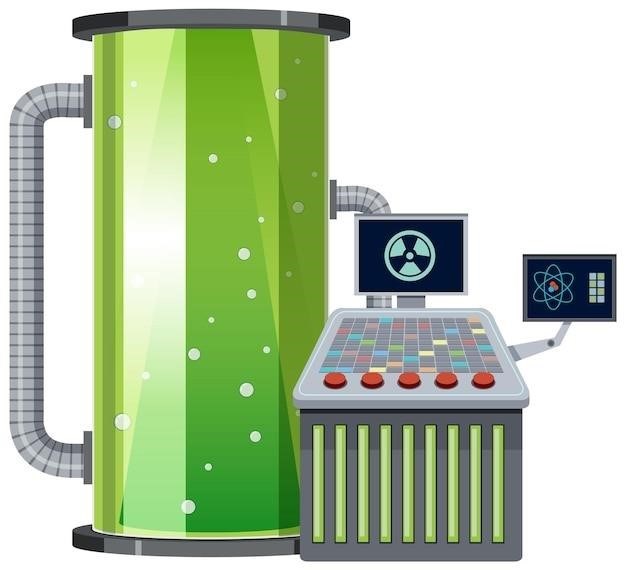mitsubishi vrf error code pdf
Mitsubishi VRF Error Codes⁚ A Comprehensive Guide
This guide provides a detailed explanation of Mitsubishi VRF error codes‚ offering troubleshooting steps and solutions for various system malfunctions. Understanding these codes is crucial for maintaining optimal performance and efficiency in your VRF system. Access comprehensive information and resolve issues effectively.
Understanding Mitsubishi VRF Error Codes
Mitsubishi VRF systems utilize error codes as a diagnostic tool to pinpoint specific issues within the system. These alphanumeric codes‚ displayed on the indoor or outdoor unit’s control panel or even a remote controller‚ provide valuable insights into the problem’s nature. Understanding these codes is the first step in effective troubleshooting. Each code corresponds to a particular malfunction‚ ranging from minor issues like clogged filters to more serious problems such as compressor failure or refrigerant leaks. A comprehensive understanding of these codes enables technicians to quickly identify the root cause‚ leading to faster repairs and minimizing downtime. The codes often indicate the specific component or system aspect requiring attention‚ streamlining the diagnostic process and expediting the resolution of the problem. Accessing online resources‚ manuals‚ or contacting Mitsubishi support can provide detailed explanations of each code’s meaning and recommended troubleshooting steps‚ significantly improving the efficiency of the repair process. The ability to interpret these codes accurately is critical for both HVAC professionals and building owners to ensure the smooth and efficient operation of Mitsubishi VRF systems.
Common Error Codes and Their Meanings
While specific codes vary across Mitsubishi VRF models‚ some common error codes and their general meanings include⁚ E1 (indoor unit fan motor malfunction)‚ often caused by a blocked fan or a faulty motor; E2 (outdoor unit compressor malfunction)‚ which might indicate compressor overheating or a refrigerant issue; E3 (high-pressure alarm for the outdoor unit)‚ potentially due to restricted refrigerant flow or a faulty pressure sensor; and F1 (loss of communication between indoor and outdoor units)‚ suggesting a problem with the wiring or communication board. Other common codes might relate to sensor malfunctions (temperature‚ pressure)‚ refrigerant leaks‚ or issues with the system’s control board. The exact meaning of a code is often model-specific‚ so consulting the relevant service manual is essential for accurate diagnosis. These manuals typically provide detailed descriptions of each error code‚ along with potential causes and suggested troubleshooting steps. Remember‚ attempting repairs without proper training and knowledge can be dangerous and may void warranties. Always prioritize safety and consult qualified professionals for complex issues. Online resources might also provide some general guidance‚ but should never replace the detailed information found in the official Mitsubishi service manuals for your specific VRF system model. Accurate identification of the error code is critical for effective troubleshooting and repair.
Troubleshooting Steps for Specific Error Codes
Effective troubleshooting of Mitsubishi VRF error codes often begins with identifying the specific code displayed on the unit’s control panel or remote. Once identified‚ consult the relevant service manual for detailed instructions. Common initial steps include checking power supply‚ ensuring proper circuit breaker operation‚ and verifying connections. Inspecting air filters for blockages is crucial‚ as restricted airflow is a frequent cause of malfunctions. For errors related to refrigerant‚ a professional HVAC technician should be contacted immediately. They possess the necessary tools and expertise to assess refrigerant levels‚ identify leaks‚ and perform safe recharging. Issues with the outdoor unit compressor may require professional attention‚ as improper handling can be hazardous. Sensor errors often involve checking the sensor’s physical integrity and electrical connections. Communication errors between units might necessitate checking wiring and connections‚ potentially requiring professional intervention for complex issues. Remember that safety is paramount; always disconnect power before attempting any physical inspection or repair. Never attempt to bypass safety features or ignore warnings indicated by the system’s error codes. Proactive maintenance‚ including regular filter cleaning and professional inspections‚ can significantly reduce the likelihood of encountering error codes. For persistent or recurring errors‚ professional assistance is recommended to prevent further damage and ensure safe operation of your VRF system.
Locating Error Codes on Your System
The location of Mitsubishi VRF error codes varies depending on the specific model and system configuration. However‚ common locations include the indoor unit’s control panel‚ often displayed as a series of flashing lights or a digital readout. These codes are typically alphanumeric combinations that correspond to specific faults. Some systems utilize wireless remote controllers which display error codes on their screens. Consult your system’s user manual for precise instructions on how to access and interpret error codes displayed on your specific remote. If the error code isn’t immediately evident on the control panel or remote‚ check for any accompanying documentation or stickers that may provide hints regarding error code locations. In some advanced systems‚ error codes may be accessed through a dedicated service port using specialized diagnostic tools. These tools‚ often used by trained technicians‚ allow for a more in-depth analysis of system parameters and error details. If you are unable to locate the error code using the methods described above‚ it’s advisable to contact a qualified Mitsubishi VRF technician or refer to the comprehensive service manual. They can provide assistance in identifying and interpreting the error code‚ ultimately facilitating efficient troubleshooting and system repair.
Utilizing Online Resources and Manuals
When troubleshooting Mitsubishi VRF error codes‚ leveraging online resources and the official system manuals is crucial. Mitsubishi Electric’s website often features comprehensive troubleshooting guides‚ FAQs‚ and downloadable PDF manuals specific to various VRF system models. These manuals provide detailed explanations of error codes‚ their meanings‚ and potential solutions; Searching online for “[your specific Mitsubishi VRF model] error codes” can yield helpful results from user forums and technical blogs. These platforms often contain discussions and solutions shared by other users who have encountered similar issues. Remember to exercise caution when using information from unofficial sources‚ verifying its accuracy against official Mitsubishi documentation. Always prioritize information from trusted sources like the manufacturer’s website or authorized service centers. While online forums can be helpful‚ remember that solutions found there might not always apply to your specific model or system setup. A thorough understanding of the system’s operation and safety procedures is essential before attempting any troubleshooting. If you’re uncomfortable working with electrical systems or refrigerant lines‚ it is strongly recommended to consult a certified HVAC technician for assistance.
Importance of Regular Maintenance
Regular maintenance is paramount for preventing costly repairs and ensuring the longevity of your Mitsubishi VRF system. Preventive maintenance significantly reduces the likelihood of encountering error codes. Scheduled maintenance typically involves cleaning air filters‚ inspecting refrigerant lines for leaks‚ checking electrical connections‚ and verifying proper operation of all components. Clean air filters ensure optimal airflow‚ preventing overheating and potential compressor issues‚ a common cause of error codes. Regular inspection of refrigerant lines helps detect leaks early‚ preventing significant refrigerant loss and potential system damage. Loose or corroded electrical connections can lead to malfunctions and error codes; therefore‚ regular inspection is critical. A certified HVAC technician can perform a comprehensive inspection‚ identify potential problems before they escalate‚ and recommend any necessary repairs or adjustments. The cost of regular maintenance is far less than the expense of repairing a major system failure caused by neglected maintenance. By adhering to a preventative maintenance schedule‚ you not only extend the life of your system‚ but also minimize the risk of encountering error codes that could lead to costly downtime and inconvenience.
Contacting Mitsubishi Support
If you’re unable to resolve a Mitsubishi VRF error code using available resources‚ contacting Mitsubishi support is the next logical step. Mitsubishi offers various support channels‚ including online resources‚ phone support‚ and authorized service centers. Their website usually provides access to detailed troubleshooting guides‚ FAQs‚ and manuals. These resources often include detailed explanations of error codes‚ potential causes‚ and recommended solutions. Phone support allows direct interaction with trained technicians who can assist in diagnosing the problem. They may ask for the specific error code displayed‚ system model information‚ and a description of the issue. Authorized service centers offer on-site service and repairs. These centers employ certified technicians with expertise in Mitsubishi VRF systems. They possess the necessary tools and knowledge to diagnose and repair complex issues. When contacting Mitsubishi support‚ it’s beneficial to have the model number of your VRF system readily available‚ as well as a detailed description of the problem‚ including the specific error code displayed. Providing this information expedites the troubleshooting process and ensures a quicker resolution. Remember to note down any troubleshooting steps you have already attempted‚ as this assists in focusing the support effort on the remaining potential causes.
Advanced Troubleshooting Techniques
For experienced technicians‚ advanced troubleshooting of Mitsubishi VRF systems might involve using specialized diagnostic tools. These tools can provide more in-depth information about system performance beyond what’s displayed by simple error codes. Multimeters‚ for instance‚ can measure voltage‚ current‚ and resistance across various components‚ helping to pinpoint faulty parts. Refrigerant pressure gauges measure the high and low-side pressures of the refrigerant‚ providing insights into potential leaks‚ compressor issues‚ or other refrigerant-related problems. Specialized software interfaces can connect to the VRF system’s control board‚ allowing technicians to access real-time data‚ system logs‚ and detailed error reports. This data can offer clues to intermittent problems or issues not immediately apparent through standard diagnostic methods. Analyzing system logs helps identify recurring errors or patterns that indicate underlying problems. Furthermore‚ understanding the system’s architecture‚ including the refrigerant piping‚ electrical connections‚ and control system‚ is crucial for advanced troubleshooting. This involves tracing signals‚ checking connections‚ and visually inspecting components for damage or wear. Remember that working with refrigerant requires proper safety precautions and certification. Improper handling can lead to injury or environmental hazards. Only trained and certified technicians should attempt advanced troubleshooting techniques involving refrigerant handling or electrical work.
Safety Precautions When Troubleshooting
Before attempting any troubleshooting‚ always prioritize safety. Turn off the power to the VRF system at the main breaker before working on any electrical components. Never work on a live system; this is crucial to prevent electrical shocks and injuries. When dealing with refrigerant‚ wear appropriate personal protective equipment (PPE)‚ including safety glasses‚ gloves‚ and closed-toe shoes. Refrigerant can cause frostbite and is harmful if inhaled. Ensure adequate ventilation in the work area‚ especially when working with refrigerants. Proper ventilation prevents the buildup of harmful gases and ensures a safe working environment. If you’re unsure about any aspect of troubleshooting‚ consult the system’s service manual. The service manual provides detailed safety instructions‚ component locations‚ and troubleshooting steps. Never attempt to repair components you are unfamiliar with. If you’re not a qualified HVAC technician‚ contact a professional for assistance. Improper repairs can damage the system further‚ leading to more extensive and costly repairs. When working at heights‚ use appropriate fall protection equipment. Always be mindful of your surroundings‚ and be aware of potential hazards such as sharp edges‚ hot surfaces‚ and moving parts. Remember‚ safety is paramount. If you’re ever in doubt‚ err on the side of caution and seek professional assistance.
Interpreting Flashing Light Patterns
Many Mitsubishi VRF systems utilize flashing light patterns on their control panels or indicator lights to signal error codes. These patterns‚ often involving combinations of blinking or solid lights‚ provide a visual indication of the system’s status. Understanding these patterns is crucial for quick diagnosis and troubleshooting. The frequency and sequence of the flashes are key to deciphering the specific error. For instance‚ two quick flashes followed by a long flash might indicate a different problem than three quick flashes followed by two long flashes. Consult your system’s service manual for a detailed explanation of these light patterns. The manual will typically include a table or chart that maps specific flashing sequences to their corresponding error codes. Note that the location of the indicator lights may vary depending on the specific model of your VRF system. Some models might have indicator lights on the indoor unit‚ while others might have them on the outdoor unit‚ or even on a separate control panel; Take note of the exact location and observe the pattern carefully. Pay close attention to the duration and timing of each flash‚ as even slight variations can indicate different problems. If you are unsure about interpreting the flashing light patterns‚ seek professional help. A qualified HVAC technician will have the necessary experience and expertise to accurately interpret the lights and perform the necessary repairs.
Additional Resources and FAQs
Beyond the official Mitsubishi documentation‚ numerous online resources can assist in troubleshooting VRF error codes. Many HVAC forums and websites dedicated to Mitsubishi systems offer user-submitted experiences and solutions to common problems. These platforms often feature discussions detailing specific error code resolutions‚ troubleshooting steps‚ and even links to helpful diagrams or videos. Remember to always cross-reference information found online with the official Mitsubishi documentation to ensure accuracy and safety. Frequently asked questions (FAQs) related to Mitsubishi VRF error codes are also readily available. These compiled lists often address common issues like communication errors‚ refrigerant leaks‚ and sensor malfunctions. Searching for “Mitsubishi VRF error code FAQs” online will lead you to many such resources. Remember that while online forums and FAQs can be helpful‚ they should not replace professional advice. If you are unable to resolve the issue using these resources‚ it is best to consult a qualified HVAC technician. Attempting complex repairs without proper training or knowledge can lead to further damage and safety hazards. Professional help ensures correct diagnosis and repair‚ restoring your VRF system to optimal efficiency and preventing future problems. Always prioritize safety when troubleshooting complex HVAC equipment.
You May Also Like

omni mount installation instructions
November 11, 2025
5 gallon water manual pump
June 20, 2025
